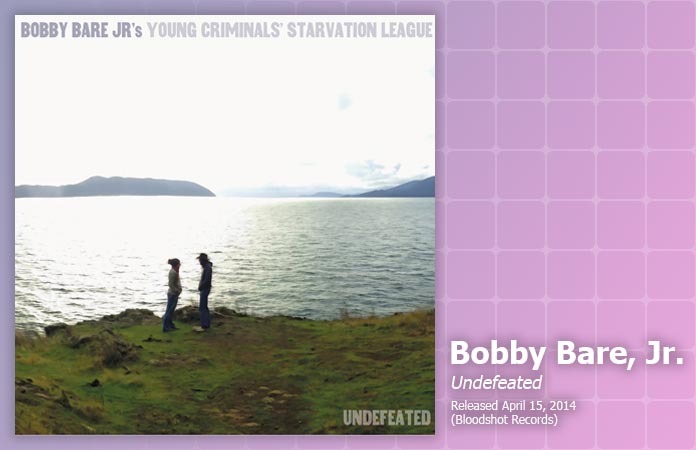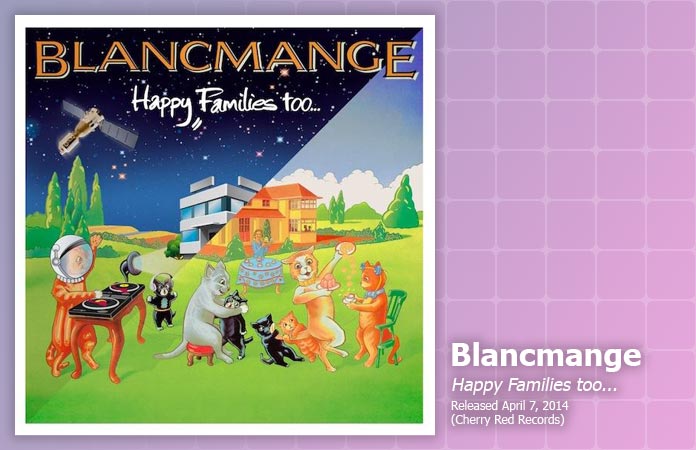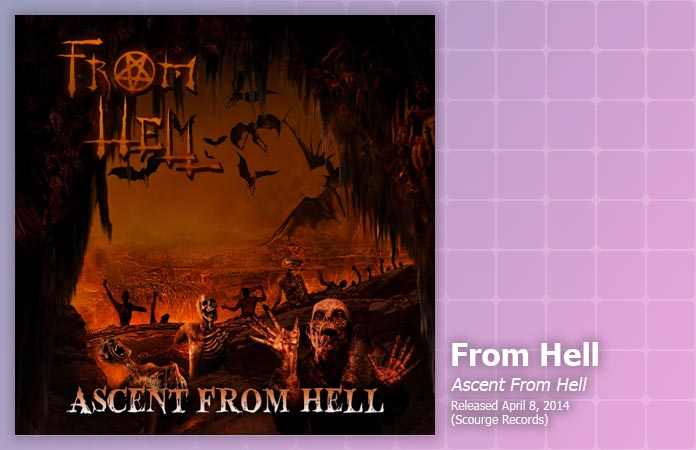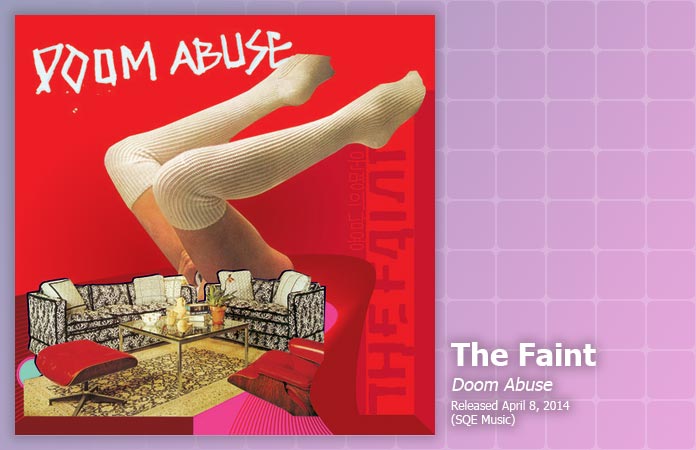Music Review: Bobby Bare, Jr., Undefeated
Published on April 18th, 2014 in: Current Faves, Music, Music Reviews, Reviews |I was watching a Hee Haw rerun a few weeks ago, and Bobby Bare was on with his kids. He was joined by two little boys for “Marie Laveau” and then sang “Daddy What If” with just one of them, a sprightly little fella with an excellent haircut. This, of course, led me down the Internet rabbit hole of finding out who that cute little boy was, and I arrived at the conclusion that the adorable kid was Bobby Bare, Jr.
While he could have carved out a career in music following in his father’s footsteps, Bobby Bare, Jr. has instead made his own way. His latest, Undefeated, is a grab bag of musical styles and influences, shot through with a thorough dose of clear-eyed realism and the occasional wrenching heartbreak.
Music Review: Peter Murphy, Should The World Fail To Fall Apart (reissued, remastered, expanded)
Published on April 18th, 2014 in: Music, Music Reviews, Retrovirus, Reviews |It’s 1986 and for many, Goth is dead. Suck on that irony for a moment.
Bauhaus has disbanded and Peter Murphy is looking for a new musical direction, but one that won’t alienate his core fanbase. It’s a difficult task, and song choice is of the highest importance. The result is a strange little album called Should the World Fail to Fall Apart, a mixed bag of brave decisions, not all of which work.
Music Review: De Lux, Voyage
Published on April 11th, 2014 in: Current Faves, Music, Music Reviews, Reviews |“I wanna say we’re doing great/but there’s something wrong, something wrong”
—”Better At Making Time”
De Lux’s self-titled, four-song 2013 EP was fantastic. I think I listened to its first track, “Better At Making Time,” three times a day for a straight week. Now they’ve got a full-length album, with a few of the songs from that EP and the added bonus of more great songs. Don’t let the deceptively simple cover art fool you. Voyage is 55 minutes of extravagance in musical form. (more…)
Waxing Nostalgic: Golden Palominos, “Buenos Aires”
Published on April 11th, 2014 in: Music, Waxing Nostalgic |It’s not fair to call the Golden Palominos a supergroup. They were one, but they were beyond that. The Golden Palominos were a collaboration of musicians, heroes of the deep underground, with a lineup that rotated from album to album, changing styles and moods, sometimes drastically, with every release.
Accessibility was not their strong suit.
Music Review: Blancmange, Happy Families too…
Published on April 11th, 2014 in: Music, Music Reviews, Retrovirus, Reviews |Remember back in 1998 when Gus Van Sant remade Psycho? That wasn’t necessarily a bad idea. Lots of things get the remake treatment. Van Sant’s version only raised a fuss because it was practically a shot-for-shot remake of the original, with very little changed. It was perceived as a sweet—although odd—gesture, more homage than remake. Ultimately, though, people asked the question, “What was wrong with the original?” Hitchcock’s thriller remains a classic. Van Sant’s changeling has been relegated to being nothing more than a curiosity.
There is a grave similarity between that project and Blancmange’s Happy Families too… which is original band member Neil Arthur’s complete re-recording of their breakthrough album, Happy Families. Originally recorded in 1982, that album included the band’s first big hit, “Living on the Ceiling.” It may not be a classic album, but it is a solid effort with very little filler.
Interview: Asking Graham Parker Questions
Published on April 11th, 2014 in: Interviews, Music |By Cait Brennan
Read Jeffery X Martin’s review of Don’t Ask Me Questions.
The new documentary Don’t Ask Me Questions follows the storied career—and much-heralded return—of Graham Parker and his band the Rumour. Popshifter‘s Cait Brennan asked Graham some questions about his career and the documentary in an email interview.
DVD Review: Don’t Ask Me Questions: The Unsung Life of Graham Parker and The Rumour
Published on April 11th, 2014 in: Documentaries, DVD, DVD/Blu-Ray Reviews, Movie Reviews, Movies, Music, Retrovirus, Reviews |Read Cait Brennan’s interview with Graham Parker.
At the end of the Seventies, a British gas station attendant, who was also a musician, got his record played on the radio. The next day, he had a contract offer from a major record label. Overnight success? A Cinderella story? Not quite.
The Kickstarter-backed documentary Don’t Ask Me Questions chronicles the rise, fall, and rise of Graham Parker and the Rumour, a band whose contemporaries included Elvis Costello and Squeeze. Their big US hit was “Local Girls,” one of the earliest videos to be played on MTV.
When their first album, Howling Wind, came out in 1976, the critical acclaim was instant and practically universal. They were widely regarded as the best live act in Britain. That doesn’t necessarily lead to stellar album sales, though, and as Parker says, “Everything was just a bit off.”
Music Review: From Hell, Ascent from Hell
Published on April 11th, 2014 in: Current Faves, Music, Music Reviews, Reviews |There was a time, not too long ago, when rock and roll was the Devil’s music. Heavy metal was Lucifer’s tool of destruction and damnation, and if you even touched a Hamer Scarab electric guitar, that was enough to send your soul screaming out of your body into the abyss, where demons would torture your eternal soul with free-form jazz and Zydeco gospel music.
Those were the halcyon days. Black magic and pentacles, hailing Satan on a regular basis (not just on holidays, like we do now), and rock loud enough to cause internal bleeding were normal things. Good times, man, good times.
Thank god for From Hell, a metal supergroup, bound and determined to bring horror-metal back to the forefront. Name-checking the immortal King Diamond, From Hell’s debut album, Ascent From Hell, is part metal album, part radio play. It’s a concept album about . . . well, here. Let me just quote the press release. (more…)
Music Review: The Faint, Doom Abuse
Published on April 11th, 2014 in: Current Faves, Music, Music Reviews, Reviews |Sometimes when a band suffers burnout, they continue to make music anyway and that music usually blows. Omaha’s electro-punk stalwarts The Faint found themselves facing a lack of inspiration and, more importantly, fun after a year of touring for their 2008 album Fasciinatiion and instead of forging ahead and into mediocrity, effectively broke up. And they were sorely missed.
In 2013, they reformed, releasing a four-song 12” they called Preversions. Preversions led to a full-length album, Doom Abuse, and it is amazing. Imagine Kraftwerk fronted by Lemmy Kilmister. Imagine being in a room full of chainsaws hanging on wires and bears are chasing you. Doom Abuse is that exhilarating.
Music Review: The Mary Onettes, Portico:
Published on April 4th, 2014 in: Current Faves, Music, Music Reviews, Reviews |The Mary Onettes’ new release, Portico: is dense with almost claustrophobic layers of synths and jangling guitars. But singer Philip Ekström’s voice has a lighter touch and floats above the music, which gives depth to these songs. Portico: reminds me a lot of The Cure’s Disintegration at times, but far more restrained and condensed. Ekström has an emotive warble like Robert Smith even while sounding almost nothing like him. He talks about death and ghosts and dreaming, all of which fit the music like a hand in a glove. There are choruses and bridges everywhere, both instrumental and vocal, which propel the songs forward, and out of the heaviness that might otherwise weigh them down.
(more…)









